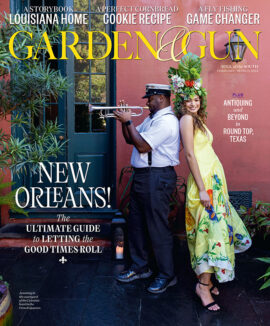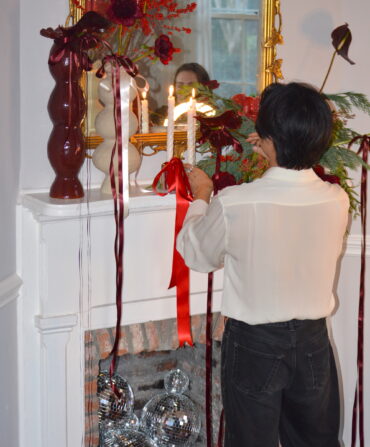“I’m a Vietnam veteran, a patriot, and a runner,” says Chip Akridge, explaining why he founded the nonprofit Trust for the National Mall to rehabilitate neglected areas of the expansive greensward that links Washington, D.C.’s most famous monuments. “When I run there and see the beauty and history, it makes my hair stand on end.”
Beauty and history are also on awe-inspiring, if less public, display at Harleigh, the sprawling estate near Oxford, Maryland, owned by Akridge and his wife, Sally. Fronting a tranquil Eastern Shore tributary of the Chesapeake Bay, the property’s original clapboard
farmhouse dates to the mid-1800s. But it wasn’t until 2007, “when we realized that we’d be happy to die here,” Chip says, that the couple initiated an extensive renovation with the Baltimore architectural and design firm Johnson/Berman.
The team lavished equal attention on the estate’s grounds, which swelled as the Akridges acquired surrounding agricultural parcels that had been destined for high-density residential development. These days, a stroll (or utility-vehicle ride) around the property reveals areas of horticultural identity that are distinct and yet expertly play off of each other to create one of the most enchanting residential gardens of the Chesapeake region.
The half-mile entrance drive sets the tone. In springtime, it’s flanked by an astounding sea of hundreds of thousands of daffodils originally planted more than a century ago by a mistress of the house who was also the founder of the local garden club.
Another member of that family designed the English-style formal garden. Under Sally’s direction, the beds are now resplendent with hostas, roses, and stunning ornamental onion blooms that suggest an explosion of purple summertime fireworks.
“This whole place is a canvas for almost any kind of expression,” Sally says. “We like to honor those who were here before us, because we’re just custodians for a while.”
Follow the Akridges’ black Labs, Bliss and Trey, on a winding path into a stand of pines and you soon encounter an unearthly stack of upended tree stumps, their exposed roots gnarled around cascades of ferns, hellebore, and primrose. Known as a stumpery in Europe but rarely found in the States, this feature was noted by the Akridges on a tour of Highgrove, the home of Prince Charles.

Photo: Patricia Lyons
Establishing Roots
The European-inspired stumpery garden.
Anyone who has visited Monticello would feel a strong sense of déjà vu on the opposite side of the house, where Chip has modeled a huge kitchen garden and perennial bed after the ones tended by Thomas Jefferson at his Virginia home. Starting uphill and sloping toward the water, twenty-nine raised beds sprout strawberries, sweet peas, collards, okra, heirloom tomatoes, and Chip’s favorite—popping corn. “When I was growing up, my grandparents were big garden folks,” Chip says. “We always canned vegetables and it stayed with me.”
Beyond the vegetables are swaths of red poppies and chamomile in four small wildflower meadows, a transitional zone to the estate’s less-manicured environs. The Akridges have turned two-thirds of the commercial agricultural acreage back into wildlife habitat. “I’m a wing shooter, and the number of ducks, geese, dove, pheasant, and wild turkeys we now have is amazing,” Chip says. His efforts to reestablish the bobwhite quail have earned multiple recognitions from Quail Unlimited.
Without a doubt, it takes plenty of attention to maintain this multifaceted property to such a high standard. But when the scent of flowering magnolia is in the air and the sun is setting over the bay, the Akridges insist it feels less like work, and more like a privilege.









